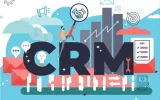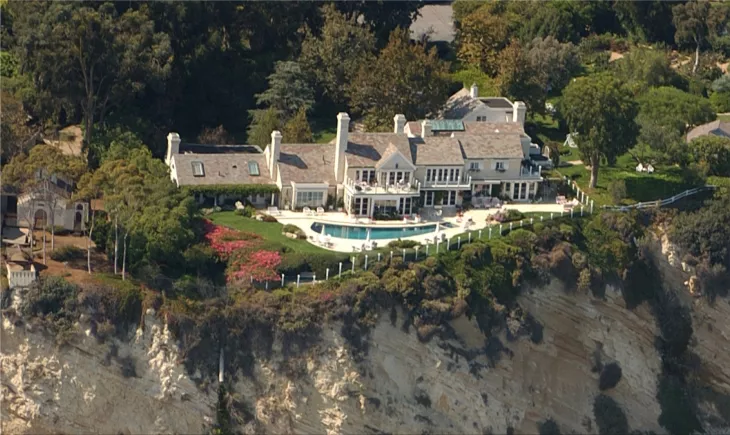For the past three days, Pablo Motos has been a hot topic. All last weekend. And the rest. The topic has been talked about a lot, so it doesn't matter if the Equality campaign was based on the presenter. After Motos's speech in El Hormiguero, there was no longer any question about whether the ad was about him or not. The fact that someone I know was mentioned in the ad shows a certain amount of worry.
Ana Bernal Trivino, a professor of Communication Studies at the UOC, thinks that Motos's statement "can make us think a lot, first by taking ourselves as a direct reference and second by showing how not recognizing mistakes can turn against them."
But the presenter's message did not bring peace. Instead, it caused even more trouble because, most of the time, trying to hide or censor information only brings more attention to the problem. Even more than if the news hadn't been kept quiet. This is known as the Streisand effect.
When an aerial photo of Barbra Streisand's California home was posted on a website in 2003, she wasn't happy about it, so she took the matter to court. The picture of her house was part of a project with 12,000 other pictures that showed how the California coast has changed over time. Before the lawsuit, only six people had downloaded that picture, two of whom were the singer and actress lawyers. After this project was made public, the photo appeared in many places, including Wikipedia.
The Ministry of Equality campaign had a similar problem. Even though it started on TV on November 21, it didn't have any effects until three days later, when Pablo Motos appeared on his show to defend himself against what he saw as an attack on his person. After the public explanation, the communicator became very popular on Twitter.
In fact, most people didn't even know about the ad in question. They learned about the controversy from the presenter's defense, which, instead of being accepted by the public, went viral on Twitter (and not for the better).
But what makes a piece of news, a character, or an act go viral? What triggers the so-called Streisand effect?
Before Pablo Motos, this media earthquake happened when Nacho Carretero's novel Farina, which was about Galician drug traffickers, came out. At the request of José Alfredo Bea Gondar, who used to be mayor of the town of O Grove in Pontevedra, a judge stole the book in 2018. The crime that was supposedly done in the book about the former mayor was that it took away his right to honor. Bea Gondar was mentioned in the book, and it said that he was found guilty of drug trafficking in 2005 but was later cleared because of a legal mistake.
But the stubbornness of the judge and the former mayor achieved the opposite effect. The publisher called it censorship, and the book quickly became a hot topic. And not just in Spain, but everywhere. It was even on Moments, a Twitter blog collecting the week's most important tweets. At the time, Ana Pardo de Vera, who was in charge of Pblico, said that Bea Gondar was only on two almost 400 pages. It wasn't even in the lines of the text, and it wasn't even part of the main story. Her name was in a footer. And nobody reads the notes at the bottom. Well, now, maybe, yes.
So, the kidnapping didn't work because even though it's illegal to print and sell new copies of the book right now, that won't happen until Bea Gondar pays the judge the 10,000 euros he asked for. Also, the judge's decision didn't change the start date of the TV show based on the book, which is this year. In other words, Farina, a book that came out in 2015 and is now in its tenth edition, is still for sale in bookstores and online. After the news came out, it became the most popular video on Amazon that year.
But Silvia Martnez, a professor of Communication Studies at the UOC, says that Pablo Motos, Farina, and even the rapper Valtnyc, another example of the national Streisand effect, are neither the first nor the last to have this happen. Martnez says, "The Streisand effect didn't start with Twitter. It's indeed gotten worse with the rise of social networks because it's harder to keep quiet or hide things now. But there have been more examples of the Streisand effect."
He thinks the Streisand effect has much to do with how curious people are and how much they want to know what other people are hiding. There have been many banned books that went on to become classics. This is what happened to Charles Darwin's book The Origin of Species, which was banned in the UK, Greece, and Yugoslavia because his ideas about natural selection and the theory of evolution went against what the Bible said about how life came to be. Or Nabokov's Lolita, which had a hard time getting published because it was almost considered pornographic. Martnez says, "Everything people try to hide makes them want to figure it out. It's almost like a natural trait."
But is there news that is more likely to spread quickly? For Martinez, yes. "Anything that has already been talked about in public has a better chance of getting more prescribers," he says. According to the expert, the issue of gender was on the agenda because of the controversy over the Law of yes is only yes, which helps this phenomenon happen. "People don't want to be left out of the general conversation; they want to know what's going on and give their opinion." To do this, she says, they look for what's happening and get information.
One more thing about viral news stories is that they can make people feel something. Martnez says, "Everything that is controversial or makes people feel something makes much more talk on social networks because it is interesting."
And the Streisand effect can also be used, even though Martnez says Pablo Motos would have hated it. "It can be useful if you work hard and plan. For example, a brand can go viral in a matter of hours if you do it right," he says.
But Martnez admits, "I guess it's not a very clear strategy, but it's clear that it's a good way to get the consumer's attention."














